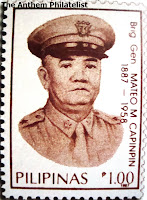Scaling the Great Wall of China
After an hour and a half ride from the central business district in Beijing, we arrived at one of the five Great Wall stations in Badaling. Upon arrival, one can immediately see the watchtowers which were built at regular intervals al ong the Great Wall and could be up to 40 feet tall. They were once used as lookouts and fortresses as well as for housing garrisons of troops and stockpiled supplies. They were also signal stations, where beacons, smoke, or flags were used for messages. Their architectural styles are diverse considering the several dynasties that ruled when they were built.
ong the Great Wall and could be up to 40 feet tall. They were once used as lookouts and fortresses as well as for housing garrisons of troops and stockpiled supplies. They were also signal stations, where beacons, smoke, or flags were used for messages. Their architectural styles are diverse considering the several dynasties that ruled when they were built.
 ong the Great Wall and could be up to 40 feet tall. They were once used as lookouts and fortresses as well as for housing garrisons of troops and stockpiled supplies. They were also signal stations, where beacons, smoke, or flags were used for messages. Their architectural styles are diverse considering the several dynasties that ruled when they were built.
ong the Great Wall and could be up to 40 feet tall. They were once used as lookouts and fortresses as well as for housing garrisons of troops and stockpiled supplies. They were also signal stations, where beacons, smoke, or flags were used for messages. Their architectural styles are diverse considering the several dynasties that ruled when they were built. The Badaling station didn't have a lift or a cable car, so the only way to reach the sixth watchtower was to walk and climb the steep and perilous stairs. Due to time constraints, we were only given an hour to accomplish this task. The distance from tower to tower was around 300 steps, and I can already hear my wife breathing heavily midway into the second tower. I had to leave her behind because her legs were shaking and felt she could n ot reach the highest towers without having a heart attack. The view became better and better the higher you go and at the fourth tower, which was my final stop, it was spectacular. There was a feeling of awe and praise for the Chinese for building this wall, reputedly the only man made object seen from space (later proven false).
ot reach the highest towers without having a heart attack. The view became better and better the higher you go and at the fourth tower, which was my final stop, it was spectacular. There was a feeling of awe and praise for the Chinese for building this wall, reputedly the only man made object seen from space (later proven false).
 ot reach the highest towers without having a heart attack. The view became better and better the higher you go and at the fourth tower, which was my final stop, it was spectacular. There was a feeling of awe and praise for the Chinese for building this wall, reputedly the only man made object seen from space (later proven false).
ot reach the highest towers without having a heart attack. The view became better and better the higher you go and at the fourth tower, which was my final stop, it was spectacular. There was a feeling of awe and praise for the Chinese for building this wall, reputedly the only man made object seen from space (later proven false). I offered a small prayer to the one million laborers who died while building this magnificent wall- also the the worlds longest cemetery. Because they had no time to dig for graves, all the dead laborers were also buried here. On the way down, I dropped by the Great Wall Store at the second tower to have my name engraved on the medal- proclaiming that you have conquered the wall.
The last battle fought at the Great Wall was in 1938 during the Sino-Japanese War, which was between the Republic of China and the Empire of Japan. Bullet marks can still be seen in the Wall at Gubeikou. While the Great Wall is currently a symbol of national pride, China struggles with how to manage and protect the Wall while controlling the mass-market development of it.
Two organizations, the China Great Wall Society and the International Friends of the Great Wall, are dedicated to preserving it.






